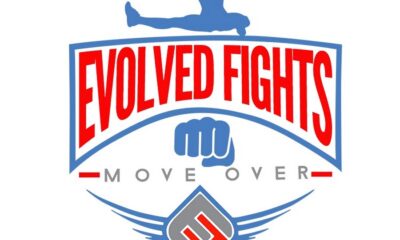Technology
Peeps Glasses Cleaner: A Comprehensive Review

In the realm of eyewear maintenance, clarity reigns supreme. Whether it’s the daily wear and tear from outdoor activities or the smudges accrued from everyday use, keeping your glasses clean is essential for optimal vision and aesthetic appeal. Enter Peeps Glasses Cleaner, a revolutionary tool designed to tackle the persistent issue of smudges and dirt on lenses with precision and efficiency. In this comprehensive review, we’ll delve into the features, functionality, and efficacy of Peeps Glasses Cleaner, exploring why it has become a go-to solution for eyewear aficionados worldwide.
Introduction to Peeps Glasses Cleaner
Peeps Glasses Cleaner represents a departure from traditional cleaning methods such as using microfiber cloths or sprays. Developed by Carbon Klean, a company renowned for its innovative approach to cleaning technology, Peeps leverages advanced carbon molecular cleaning technology to provide a superior cleaning experience for eyeglasses, sunglasses, and more.
Design and Build Quality
At first glance, Peeps Glasses Cleaner may resemble a compact, futuristic tool straight out of a science fiction movie. Its sleek, ergonomic design fits comfortably in the palm of your hand, with a form factor reminiscent of a miniature pair of tongs. The device consists of two carbon-infused microfiber pads housed within a durable, lightweight casing. The pads are designed to attract and remove oil, fingerprints, and dust particles from the surface of lenses with minimal effort.
The build quality of Peeps Glasses Cleaner is impressive, with attention to detail evident in every aspect of its construction. The casing is made from high-quality materials that ensure longevity and durability, while the microfiber pads are engineered to withstand repeated use without losing their effectiveness. Additionally, the compact size of the device makes it highly portable, allowing you to carry it with you wherever you go for on-the-spot cleaning convenience.
How Peeps Glasses Cleaner Works
The magic behind Peeps Glasses Cleaner lies in its innovative cleaning technology, which harnesses the power of carbon molecules to achieve remarkable results. Unlike traditional cleaning methods that rely on chemicals or abrasive materials, Peeps uses a gentle yet effective approach to remove dirt and smudges from lenses.
The process begins by gently sliding the microfiber pads of the Peeps cleaner across the surface of the lens. As the pads make contact with the lens, the carbon molecules embedded within them attract and lift away any oil, dirt, or residue present on the surface. This action effectively cleans the lens without leaving behind streaks or scratches, ensuring crystal-clear visibility with every use.
Key Features and Benefits
Peeps Glasses Cleaner boasts several key features and benefits that set it apart from conventional cleaning methods:
Efficient Cleaning: The carbon-infused microfiber pads of Peeps Glasses Cleaner provide a highly efficient cleaning experience, removing smudges and dirt from lenses in seconds.
Gentle on Lenses: Unlike harsh chemicals or abrasive materials, Peeps uses a gentle cleaning action that is safe for all types of lenses, including anti-reflective and coated lenses.
Long-Lasting Performance: The microfiber pads of Peeps Glasses Cleaner are designed to last for up to 500 uses, ensuring long-term value and cost-effectiveness.
Portable and Travel-Friendly: With its compact size and lightweight design, Peeps is the perfect companion for on-the-go cleaning, whether you’re traveling, commuting, or simply out and about.
Versatile Compatibility: Peeps Glasses Cleaner is suitable for use with a wide range of eyewear, including glasses, sunglasses, reading glasses, and more.
User Experience and Customer Satisfaction
The overwhelming consensus among users of Peeps Glasses Cleane’r is one of satisfaction and praise. Many customers have reported significant improvements in the clarity and cleanliness of their lenses after using the device, with some describing it as a “game-changer” in eyewear maintenance. The ease of use and portability of Peeps have also been widely appreciated, making it a favorite among busy professionals, outdoor enthusiasts, and anyone else seeking a convenient solution for keeping their glasses clean and clear.
Conclusion
Peeps Glasses Cleane’r represents a paradigm shift in the world of eyewear maintenance, offering a revolutionary solution for keeping your glasses clean and clear. With its innovative carbon cleaning technology, durable construction, and portable design, Peeps has earned its place as a must-have accessory for anyone who values the importance of clear vision and pristine lenses. Say goodbye to smudges and hello to crystal-clear clarity with Peeps Glasses Cleane’r.
Technology
Namelix: Your Go-To AI Business Name Generator

In the digital age, creating a unique and memorable name for your business is a vital step toward establishing a strong brand identity. Namelix, an AI-powered business name generator, has emerged as a reliable and innovative tool designed to simplify this process. With its intuitive interface, powerful algorithms, and ability to deliver creative results in seconds, Namelix is redefining the way businesses approach branding.
Understanding Namelix
Namelix is a free, web-based application that uses artificial intelligence to generate business names. Whether you’re launching a startup, rebranding an existing company, or brainstorming ideas for a side project, Namelix offers a comprehensive solution. The platform not only provides an extensive list of potential names but also checks domain availability, ensuring your chosen name has an online presence.
The Need for a Business Name Generator
Selecting a business name is often a daunting task. A good name should be memorable, relevant, and reflect your brand’s identity. It must also be unique enough to avoid legal conflicts and resonate with your target audience. Namelix addresses these challenges by streamlining the naming process. Instead of spending hours brainstorming or hiring expensive branding agencies, entrepreneurs can leverage Namelix’s AI to explore creative options effortlessly.
Features of Namelix
AI-Driven Creativity
Namelix uses cutting-edge machine learning algorithms to understand user preferences. By analyzing inputs such as keywords, industry, and style preferences, the AI generates names that are both relevant and imaginative.
Customization Options
Users can customize the output by selecting name styles, such as short names, compound words, or names inspired by specific languages. This ensures that the generated names align with the user’s vision and industry standards.
Domain Availability Checks
One standout feature of Namelix is its ability to check the availability of domain names. This functionality is invaluable in today’s digital-first world, where an online presence is crucial for any business.
Intuitive Interface
The platform is designed with simplicity in mind. Its user-friendly interface makes it accessible to individuals with little to no technical expertise.
Free Access
Nameli’x is completely free to use, making it an excellent choice for startups and small businesses operating on a tight budget.
How Namelix Works
Using Nameli’x is a straightforward process. Users start by entering relevant keywords related to their business. These could include the type of service offered, the target audience, or the desired brand image. Next, users select their preferred name styles and tweak settings for creativity levels. Within seconds, Nameli’x generates a curated list of potential names, complete with available domain options.
Benefits of Using Namelix
Time-Saving Solution
Nameli’x eliminates the need for extensive brainstorming sessions, providing results in seconds. This allows business owners to focus on other aspects of their venture.
Cost-Effective Option
Hiring branding consultants or agencies can be expensive. Nameli’x offers a free alternative without compromising on quality.
Enhanced Creativity
The AI-driven approach ensures that users are presented with options they might not have considered on their own.
Versatility
Nameli’x caters to various industries and business types, making it a versatile tool for entrepreneurs across different domains.
Examples of Businesses Benefiting from Namelix
Startups, freelancers, small businesses, and even large corporations have found value in Namelix’s capabilities. For example, a tech startup might use Nameli’x to generate modern, innovative names, while a boutique bakery might seek something elegant and whimsical.
Challenges and Limitations
While Nameli’x offers numerous advantages, it’s important to acknowledge its limitations. The tool relies heavily on the quality of user inputs. Poorly chosen keywords or unclear preferences may lead to less satisfactory results. Additionally, while the platform checks domain availability, it doesn’t ensure trademark clearance, requiring users to conduct further research before finalizing a name.
The Future of Namelix and AI Branding Tools
As artificial intelligence continues to evolve, tools like Nameli’x are expected to become even more sophisticated. Future iterations may include features such as multilingual support, deeper integration with branding guidelines, and enhanced trademark checking capabilities.
Tips for Maximizing Namelix’s Potential
Be specific with your keywords to guide the AI effectively.
Experiment with different name styles and creativity levels.
Use the domain availability feature to secure your online presence promptly.
Conclusion
Nameli’x is a game-changer for entrepreneurs and businesses looking to establish a strong brand identity. Its AI-driven approach, user-friendly design, and cost-free access make it an indispensable tool in the modern branding toolkit. By combining innovation with practicality, Nameli’x empowers users to create unique, memorable, and relevant business names effortlessly.
FAQs
1. Is Namelix completely free to use?
Yes, Namelix is entirely free, allowing users to generate names and check domain availability without incurring costs.
2. Can Namelix ensure trademark availability for the names it generates?
No, while Namelix checks domain availability, users must conduct separate trademark checks to ensure legal compliance.
3. What types of businesses can use Namelix?
Namelix is versatile and caters to startups, small businesses, freelancers, and even larger corporations across various industries.
4. Does Namelix support multiple languages?
Currently, Namelix focuses primarily on English names, but future updates may include multilingual capabilities.
5. Can I save the names generated by Namelix for later use?
Yes, Namelix allows users to save their favorite suggestions for future reference.
6. How does Namelix handle domain availability checks?
Namelix provides real-time domain availability information for each name it generates, simplifying the process of securing an online presence.
Technology
Solscan: A Comprehensive Blockchain Explorer for the Solana Network

The blockchain revolution has brought about numerous tools to enhance user interaction and understanding of decentralized networks. Among them, Solscan stands out as an essential platform for anyone delving into the Solana blockchain. Offering real-time insights into transactions, smart contracts, token prices, and network analytics, Solscan serves as a powerful resource for developers, investors, and enthusiasts alike. This article explores Solscan’s capabilities, its importance in the blockchain ecosystem, and how it enriches the Solana community.
Understanding Solscan and Its Role in the Solana Ecosystem
Solscan is a blockchain explorer and analytics platform designed specifically for the Solana blockchain. It functions as a window into the network, enabling users to search, view, and analyze blockchain data with ease. Solana, known for its high-speed transactions and low fees, has rapidly gained traction among developers and users. Solscan complements this ecosystem by offering a user-friendly interface for tracking and understanding on-chain activity.
As a blockchain explorer, Solscan provides detailed information about transactions, blocks, token transfers, and wallets. Its analytics capabilities further empower users to make informed decisions by analyzing trends, network activity, and the performance of decentralized applications (dApps).
Key Features of Solscan
Transaction Tracking
Solscan allows users to monitor individual transactions on the Solana blockchain. By entering a transaction ID, users can view comprehensive details, including the status, fee, block time, and associated wallets.
Block Exploration
Each block on the Solana blockchain contains a wealth of data. Solscan presents this data in an easily digestible format, showcasing block heights, timestamps, validators, and transaction counts.
Token and Market Analytics
Solscan tracks token performance, including prices, market caps, and trading volumes. This feature is particularly useful for traders and investors looking to monitor token trends.
Smart Contract Insights
For developers and blockchain enthusiasts, Solscan provides an in-depth look at smart contracts. Users can explore contract details, associated transactions, and interactions, fostering transparency and trust.
NFT and DeFi Integration
With Solana’s growing prominence in the NFT and DeFi spaces, Solscan includes features to track non-fungible token (NFT) collections and decentralized finance (DeFi) protocols. This integration makes Solscan a versatile tool for the broader blockchain community.
User-Friendly Interface
Solscan’s intuitive design ensures accessibility for both beginners and experienced blockchain users. The platform organizes complex data into clear categories, simplifying navigation and data interpretation.
The Importance of Solscan in the Blockchain Landscape
Enhancing Transparency
Blockchain technology thrives on transparency, and Solscan upholds this principle by making Solana’s blockchain data easily accessible. Users can independently verify transactions, monitor wallet activities, and scrutinize smart contracts.
Empowering Decision-Making
For investors and traders, Solscan serves as a vital resource. By providing up-to-date information on token performance, users can make data-driven decisions regarding their investments.
Supporting Developers
Developers rely on blockchain explorers to test and debug their applications. Solscan’s detailed analytics and contract insights enable developers to fine-tune their dApps and smart contracts.
Building Trust
By offering a window into the blockchain, Solscans fosters trust among users. Transparency and accountability are crucial in the decentralized world, and Solscans contributes significantly to these values.
How to Use Solscan Effectively
Searching for Transactions
To track a transaction, users can enter the transaction ID in the search bar. The resulting page displays all relevant details, including the transaction status, fees, and involved addresses.
Exploring Wallet Activities
Users can enter a wallet address to view its transaction history, token holdings, and associated activities. This feature is useful for monitoring wallet performance and activity.
Navigating Smart Contracts
Developers can use Solscans to explore and analyze smart contracts on the Solana blockchain. By entering the contract address, users can view interactions, code snippets, and related transactions.
Monitoring Market Trends
Solscan’s market analytics section provides a snapshot of token prices, market caps, and trading volumes. Users can stay updated on market movements and identify potential investment opportunities.
The Role of Solscan in the Growth of Solana
Solana’s rise as a high-performance blockchain network has been accompanied by the growing demand for reliable analytics tools. Solsca’n has become an integral part of this ecosystem by bridging the gap between blockchain data and user understanding. Its role in fostering transparency, supporting developers, and empowering users is vital for the continued growth of the Solana network.
Challenges and Future Prospects for Solscan
While Solsca’n has proven to be a valuable tool, it faces challenges as the blockchain space evolves. The rapid growth of the Solana network brings increased data volume, necessitating continuous upgrades to Solscan’s infrastructure. Additionally, maintaining user trust and ensuring data accuracy will remain ongoing priorities.
Looking ahead, Solscan’s future appears promising. With plans for expanded features, integration with other blockchain platforms, and enhanced user experiences, Solsca’n is well-positioned to remain a cornerstone of the Solana ecosystem.
Conclusion
Solscans stands as a beacon of accessibility and transparency in the fast-paced world of blockchain technology. By offering a comprehensive suite of features for tracking, analyzing, and understanding Solana’s blockchain, it caters to the needs of a diverse user base. Whether you’re a developer, investor, or curious enthusiast, Solscans provides the tools you need to navigate the Solana network confidently. As Solana continues to grow, Solscan’s role in ensuring a transparent and informed blockchain experience will only become more crucial.
FAQs
1. What is Solscan, and what does it do?
Solscan is a blockchain explorer and analytics platform designed for the Solana blockchain. It allows users to track transactions, explore blocks, analyze smart contracts, and monitor market trends.
2. How does Solscan support Solana developers?
Solscan provides detailed insights into smart contracts, transaction data, and network activity, enabling developers to test, debug, and optimize their decentralized applications.
3. Can Solscan track NFTs and DeFi activities?
Yes, Solscan includes features to monitor NFT collections and DeFi protocols on the Solana blockchain, offering users a comprehensive view of these ecosystems.
4. Is Solscan free to use?
Yes, Solscan is a free platform. Users can access its features without any cost, making it accessible to a wide audience.
5. How reliable is the data on Solscan?
Solscan sources its data directly from the Solana blockchain, ensuring accuracy and reliability for users seeking transparent and trustworthy information.
6. What sets Solscan apart from other blockchain explorers?
Solscan’s focus on the Solana blockchain, combined with its user-friendly interface, detailed analytics, and NFT/DeFi integration, distinguishes it from general-purpose blockchain explorers.
Technology
Infotechh.com: Leading Innovation in Technology Solutions

In the fast-paced world of technology, staying ahead of the curve is not just a matter of innovation; it’s about anticipating the future and adapting to the ever-evolving needs of the digital age. One platform that stands out in this endeavor is Infotechh.com, a website that has quickly become a key player in providing cutting-edge solutions across multiple sectors. In this article, we will delve into the various aspects of Infotechh.com, exploring its mission, services, impact, and why it is considered a front-runner in the technological sphere.
Introduction to Infotechh.com
Infotechh.com is an innovative digital platform that caters to businesses and individuals looking for modern, high-quality tech solutions. From offering software development services to consulting on IT infrastructure, the site’s purpose is to empower clients with the tools needed to succeed in the digital economy. Infotechh.com provides a wide range of services and tools, each designed to address specific technological needs, allowing businesses to streamline their processes and achieve operational excellence.
Since its inception, Infotechh.com has been committed to making technology accessible, efficient, and impactful. By delivering customized solutions, it ensures that clients are equipped to navigate the complexities of the digital world. The site is a trusted partner for companies of all sizes, ranging from startups to large enterprises.
Services Offered by Infotechh.com
Infotechh.com offers a broad array of services aimed at transforming businesses in various industries. These services cover everything from software development to IT support and beyond. Let’s take a closer look at some of the key services offered.
Software Development and Custom Solutions
At the heart of Infotechh.com is its custom software development service. The platform provides bespoke software solutions tailored to meet the unique needs of clients. Whether it’s designing an app for a startup or creating complex enterprise software, Infotechh.com has the expertise to bring any vision to life. The development process is transparent, collaborative, and focused on creating a product that delivers real-world value.
Their team of developers specializes in a wide range of programming languages and technologies, ensuring that clients receive a solution that is both modern and scalable. With expertise in web development, mobile applications, cloud computing, and more, Infotechh.com offers a one-stop solution for all software-related needs.
IT Consulting and Strategy
Infotechh.com also provides comprehensive IT consulting services, helping businesses optimize their technology infrastructure. Through careful analysis, their experts offer strategic recommendations on how companies can enhance their IT systems to support long-term goals. Whether it’s through cloud adoption, cybersecurity improvements, or data management strategies, Infotechh.com’s consulting services are designed to align technology with business objectives.
Their approach is not just about solving immediate IT challenges, but about positioning businesses for future success. With a focus on sustainable and scalable technology, Infotechh.com ensures that companies are not just keeping up with trends, but are well-prepared for whatever the future holds.
Cloud Services and Data Management
As cloud technology becomes increasingly important for businesses of all sizes, Infotechh.com has positioned itself as a leader in providing robust cloud solutions. The platform offers cloud storage, cloud-based applications, and infrastructure management services that make it easier for companies to transition to the cloud.
In addition to cloud solutions, Infotechh.com also provides data management services, ensuring that businesses can effectively store, retrieve, and analyze their data. Data security is a primary concern, and Infotechh.com employs cutting-edge security protocols to safeguard client information.
IT Support and Maintenance
A critical part of any IT infrastructure is reliable support and maintenance. Infotechh.com offers ongoing support services, helping businesses resolve technical issues quickly and efficiently. With a team of dedicated professionals available 24/7, companies can rest assured knowing that any problems will be handled promptly.
Maintenance services ensure that systems are regularly updated and operating at peak performance, reducing the risk of downtime and improving overall productivity. Whether it’s fixing software bugs or performing system upgrades, Infotechh.com’s support team is always ready to assist.
How Infotechh.com is Changing the Technological Landscape
The technology industry is fast-paced, and staying ahead of the competition is no easy feat. Infotechh.com’s impact can be seen across several industries, as it provides innovative solutions that help businesses remain competitive in an increasingly digital world. Here’s how Infotechh.com is shaping the technological landscape.
Empowering Startups and Small Businesses
One of the most impressive aspects of Infotechh.com is its commitment to supporting startups and small businesses. These businesses often face limited resources and struggle to access the same technology solutions as larger corporations. Infotechh.com levels the playing field by providing affordable and scalable solutions that grow with the business.
Through tailored software, cost-effective IT consulting, and cloud-based services, startups and small businesses can leverage enterprise-grade technology without the hefty price tag. Infotechh.com provides a path for businesses to achieve their potential and make the most of their digital presence.
Facilitating Digital Transformation for Enterprises
For large enterprises, Infotechh.com offers digital transformation solutions that modernize their technology infrastructure. In an age where agility and innovation are crucial, businesses need to constantly evolve. Infotechh.com helps organizations become more agile, efficient, and resilient by integrating new technologies, optimizing existing systems, and enabling seamless collaboration across departments.
Their services include legacy system modernization, cloud migrations, automation, and data-driven decision-making tools. With Infotechh.com’s support, businesses can improve operational efficiency, reduce costs, and drive innovation.
Bridging the Skills Gap in Technology
A significant challenge in today’s tech-driven world is the skills gap. There is a shortage of qualified professionals in many areas of technology, and companies often struggle to fill these roles. Infotechh.com plays a vital role in addressing this issue by offering training and upskilling programs for individuals and organizations alike.
Through workshops, certifications, and hands-on training, Infotechh.com is helping the workforce stay up to date with the latest technological trends. Whether it’s coding boot camps for developers or cloud certifications for IT professionals, the platform ensures that individuals and teams have the knowledge needed to thrive in the digital era.
The Future of Infotechh.com
As technology continues to evolve, so too will the services and solutions offered by Infotechh.com. The company is committed to staying ahead of emerging trends, such as artificial intelligence, machine learning, and blockchain, and is poised to introduce new services that will help businesses stay competitive.
Infotechh.com’s focus on innovation means that it is always looking for new ways to support its clients. Whether it’s through the development of new software tools, enhancing existing services, or integrating the latest technologies, Infotechh.com is positioned for continued success in the rapidly changing tech landscape.
Conclusion
Infotechh.com has established itself as a leading provider of technological solutions, offering a wide range of services that empower businesses to achieve their goals. Through software development, IT consulting, cloud services, and support, Infotechh.com helps businesses navigate the complexities of the digital world. Its commitment to innovation, affordability, and accessibility has made it a trusted partner for companies of all sizes.
As technology continues to evolve, Infotechh.co’m will remain at the forefront, providing businesses with the tools and expertise they need to succeed. By combining deep technical knowledge with a forward-thinking approach, Infotechh.co’m is helping shape the future of business and technology.
FAQs
1. What services does Infotechh.com offer?
Infotechh.co’m provides a variety of services, including custom software development, IT consulting, cloud services, data management, and IT support. These services are tailored to meet the unique needs of businesses in various industries.
2. How can Infotechh.com help startups and small businesses?
Infotechh.com helps startups and small businesses by offering affordable, scalable technology solutions. This includes custom software development, cloud-based services, and IT consulting that allows small businesses to leverage advanced technology without high costs.
3. What makes Infotechh.com different from other tech platforms?
Infotechh.com stands out for its personalized approach to technology solutions. They offer custom services designed to meet the specific needs of each client, whether it’s a startup or a large enterprise. Their focus on innovation and customer support sets them apart.
4. How does Infotechh.com support digital transformation?
Infotechh.com helps businesses modernize their technology infrastructure by offering services like legacy system modernization, cloud migrations, and the integration of automation and data-driven tools, enabling businesses to become more agile and efficient.
5. Does Infotechh.com offer training programs?
Yes, Infotechh.com offers training and upskilling programs in various areas of technology. These programs include coding boot camps, cloud certifications, and hands-on workshops to help individuals and teams stay current with the latest technological trends.
6. What is the future of Infotechh.com?
Infotechh.com is committed to remaining at the forefront of emerging technologies. As the tech landscape evolves, the platform will continue to innovate, offering new services and tools that help businesses succeed in a digital-first world.

 Nail Salons9 months ago
Nail Salons9 months agoNail Salons in Ridgewood, NJ

 Topic7 months ago
Topic7 months agoMakoshake: A Popular Model and Cam Girl

 Topic8 months ago
Topic8 months agoEvolved Fights: Where Mixed Wrestling Meets Adult Entertainment

 Business7 months ago
Business7 months agoSkyWestOnline: Empowering Employees with Essential Resources

 Topic9 months ago
Topic9 months agoEmbracing the Paradox of Retroya: Where Past and Future Collide

 Uncategorized8 months ago
Uncategorized8 months agoExploring Rutube: Russia’s Dynamic Video Platform

 Topic8 months ago
Topic8 months agoFruit of the Loom: Cornucopia Logo Fact Check

 Nail Salons9 months ago
Nail Salons9 months agoNail Salons in Meriden, CT















